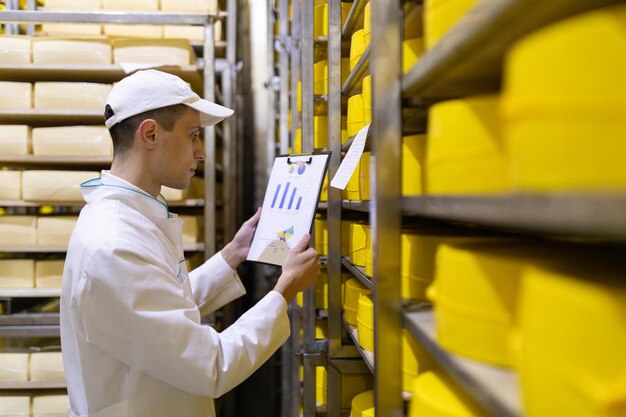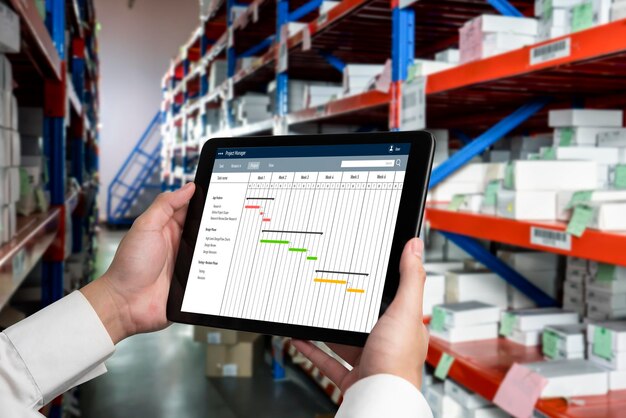What Is MRP In ERP (Relationship, Business Optimization, And Benefits)
Material Requirements Planning (MRP) is a pivotal component within Enterprise Resource Planning (ERP) systems, designed to streamline manufacturing processes by ensuring that materials and products are available for production and delivery.
But what is MRP in ERP? And how do these systems work together? Understanding this relationship can help companies optimise their production and supply chain management.
Consider this as your best guide, where we explore the MRP ERP definition, its functions, benefits, and limitations.

What Is MRP In ERP
Material Requirements Planning is a key component of ERP systems. MRP helps businesses efficiently manage their inventory and production processes by determining what materials are needed when they are needed, and in what quantities.
By analyzing data such as inventory status, production schedules, and demand forecasts, MRP helps in planning and controlling manufacturing operations effectively.
Within an ERP system, MRP functions as a critical module that interacts with various other components like inventory management, procurement, and production scheduling. This integration ensures a continuous flow of operations without unnecessary delays or excessive stock.
How Does Material Requirements Planning (MRP) Work?
By MRP ERP definition, you know the core purpose of MRP is to calculate what materials are needed for production when they are needed, and in what quantities. To achieve this, the MRP system follows a series of steps:
Step 1: Demand Forecasting
The first step in MRP is understanding the demand for the finished goods. This is typically based on sales orders, forecasts, or historical data.
Step 2: Inventory Control:
The system then looks at current inventory levels to determine whether the required materials are available or need to be ordered.
Step 3: Order Planning
Based on the demand and inventory levels, the MRP system generates purchase orders for raw materials and work orders for production.
A crucial element in MRP is the Bill of Materials (BOM). The BOM serves as a foundation for planning and ensures these three things:
Material composition – What materials are needed for each product?
Quantity required – How much of each material is needed?
Production hierarchy – The order in which components are assembled.
What Is An MRP System?
An MRP system is a software application designed to automate and manage the MRP process. These systems offer functionalities such as:
Inventory Management: Tracking stock levels and movements.
Production Scheduling: Planning and optimizing production activities.
Procurement Management: Managing purchasing activities for raw materials.
Capacity Planning: Assessing production capacity to meet demand.
What Is The Relationship Between ERP And MRP?
MRP is often integrated as a module within a broader ERP system. While MRP focuses specifically on materials and production planning, ERP encompasses a wider range of business processes, including finance, human resources, and customer relationship management.
Integrating MRP into an ERP system offers several benefits:
Data Consistency: Ensures that all departments access the same information, reducing errors.
Improved Efficiency: Streamlines processes by automating workflows across departments.
Enhanced Decision-Making: Provides comprehensive insights through consolidated data.
For instance, a leading global food and beverage company faced challenges with inventory management. They started using an ERP system with an integrated MRP module can synchronize its production and supply chain schedules.
Results:
Achieved a 20% reduction in inventory costs within the first year.
Improved demand forecasting accuracy
Improved inventory turnover by reducing spoilage.

How Has MRP Evolved Over Time?
The evolution of MRPsystems is deeply intertwined with advances in technology and business practices. Over the years, MRP has transformed from a basic tool for inventory management to a comprehensive part of the modern ERP system.
MRP I: The initial version of MRP focused solely on inventory control and the purchasing of raw materials based on production schedules.
MRP II: Expanded in the 1980s to include additional aspects like capacity planning and shop floor control.
ERP: Developed in the 1990s, integrating various business processes, including MRP, into a unified system.
In context of industry 4.0, today’s MRP systems leverage AI, IoT, and cloud computing for:
Real-time data analysis
Predictive maintenance
Seamless remote access
Infact, a study by Aberdeen Group found that manufacturers using IoT in MRP experience a 15% reduction in production lead times. This can save you time of delivering products and thus, improving customer satisfaction.
What Are The Inputs And Outputs Of MRP?
The effectiveness of an MRP system relies on accurate inputs and generates specific outputs:
Inputs:
Bill of Materials (BOM): Detailed list of components and materials required for production.
Inventory Levels: Current stock information to determine material availability.
Demand Forecasts: Predicted customer orders to plan production schedules.
Outputs:
Purchase Orders: Requests to suppliers for necessary materials.
Work Orders: Instructions for the production floor to manufacture products.
Material Plans: Schedules outlining when materials are needed in the production process.
Accurate inputs ensure that the MRP system can generate reliable outputs, facilitating smooth manufacturing operations.

What Are The Benefits Of MRP?
The following are the benefits of the MRP system:
1. Improves Production Planning and Scheduling
Production delays often stem from poor planning, lack of inventory visibility, and inefficient scheduling. MRP systems address these issues by providing:
Real-time production insights: MRP provides manufacturers with real-time visibility into production needs, ensuring materials are available exactly when required.
Minimised downtime: By proactively managing materials and resources, MRP prevents delays caused by shortages, allowing production to run smoothly.
Improved adaptability: Businesses can quickly adjust schedules in response to demand fluctuations, reducing bottlenecks and maximising output.
2. Helps Reduce Inventory Costs
Holding excess inventory means blocking your working capital and paying for storage expenses. But, if there is a shortage of materials, then the production cycle will be halted. MRP in ERP systems helps maintain the right balance. How? By calculating the right amount of materials needed using Just-in-Time (JIT) ordering practices.
This also helps businesses reduce warehouse space. Because, with lower inventory levels, companies spend less on handling, managing, and moving excess stock within storage facilities. APICS survey seconds that companies using MRP solutions report a 20-30% reduction in carrying costs.
3. Improves Cost Efficiency and Supports Waste Reduction
Unplanned purchases and inefficient resource utilisation can drive up operational costs. MRP helps cut expenses by ensuring that procurement and production align with business needs.
Suppose you are a skincare company with an unsalable lot of excess products. With MRP systems, you can calculate the expiry dates of your production lot of skincare products. Then, by announcing clearance sales, you can clear up the near-expiry products first. The results?
Less spoilage and waste associated with unsold products
Immediate revenue on sale leading to improvement in cash flow.
Offering discounted products attracts more customers.
4. Strengthen Supplier and Procurement Management
Managing supplier relationships and ensuring timely procurement is critical for smooth production. MRP optimises supplier coordination and purchasing processes.
Automated purchase orders: MRP triggers orders automatically when stock levels reach a set threshold.
Improved supplier relationships: Ensures timely payments and accurate order placement, strengthening business partnerships.
Reduced procurement risks: MRP helps in identifying the best suppliers by analysing past performance, pricing, and delivery timelines.
5. Regulatory Compliance and Quality Control
Industries such as pharmaceuticals, aerospace, and food manufacturing require strict adherence to regulatory standards. MRP systems help businesses stay compliant.
Ensures batch tracking and traceability: Essential for industries with strict quality regulations.
Reduces human errors in reporting: Automated record-keeping ensures accurate compliance documentation.
Improves product quality: Standardized processes ensure consistency in production quality, reducing defects and returns.
What Are The Limitations Of MRP?
While MRP systems offer several benefits, they also have their own share of challenges, like inflexibility in production schedules, reliance on inaccurate data, overestimating demand and system complexity. Let us understand them in detail below:
1. Corrupt Data Leads to Inaccurate Planning
MRP relies heavily on quality and accuracy of data and inputs. If inventory levels, lead times, or demand forecasts are incorrect either due to human eros, outdata records or any other reason, then the entire material plan becomes unreliable.
2. Rigid Demand Assumptions = Wasted Resources
MRP assumes that the demand of final goods/services is fixed. However, the market is competitive and uncertain. A lot of factors affect the demand like:
Advancement of technology
Change in consumer likes and preferences
External competition from global forces
Government policies and regulations
Without considering these factors, MRP software would generate false production plans that can either lead to dead stock inventory or cause shortage of supply. Both would lead to wasted time and resources.
3. Complex Systems Require Skilled Management
MRP systems are intricate and require specialized knowledge. Companies must train staff to manage system complexities, interpret data, and adjust for real-world variability. Without proper expertise, errors can multiply.
4. Integration Challenges with Other Systems
MRP must integrate with ERP, accounting, and supplier management systems.If integration fails, businesses face inefficiencies, communication gaps, duplicate data, and operational disruptions. Seamless connectivity is essential for accuracy.
5. High Implementation and Maintenance Costs
Setting up and maintaining an MRP system requires significant investment. Hardware, software, training, and ongoing updates add to operational costs. Small businesses may find these expenses prohibitive.
That said, MRP systems fall short in many areas of business, such as finance, sales, and customer relationship management. Here, an ERP system comes off as a better choice.
If you are looking for a comprehensive ERP solution that includes a robust MRP module, consider Eklavya ERP.

Frequently Asked Questions About What Is MRP In ERP
Material Resource Planning (MRP) is a software module used in conjunction with Enterprise Resource Planning (ERP). MRP works on ERP to calculate the materials that are available at the right time to meet production schedules.
The key to MRP in ERP systems lies in its ability to plan production, optimise inventory levels, and schedule production processes.